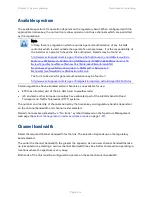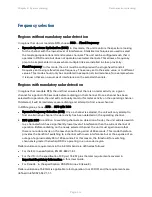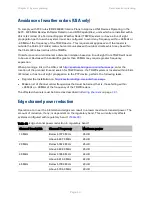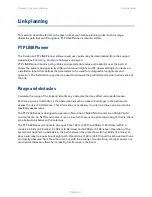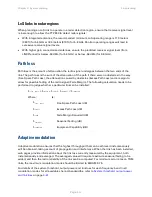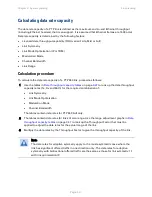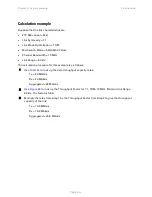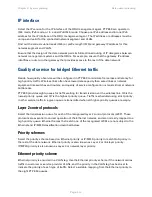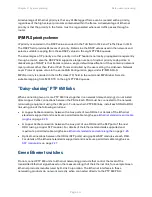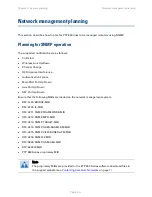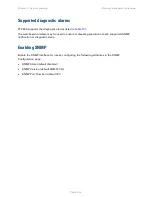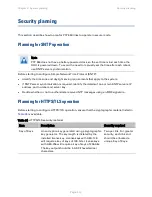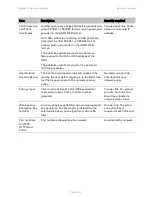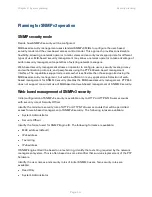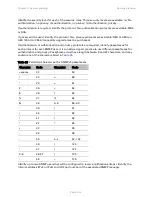
Chapter 3: System planning
Link planning
Link planning
This section describes factors to be taken into account when planning links, such as range,
obstacles path loss and throughput. PTP LINKPlanner is recommended.
PTP LINKPlanner
The Cambium PTP LINKPlanner software and user guide may be downloaded from the support
website (see
).
PTP LINKPlanner imports path profiles and predicts data rates and reliability over the path. It
allows the system designer to try different antenna heights and RF power settings. It outputs an
installation report that defines the parameters to be used for configuration, alignment and
operation. The installation report can be used to compare the predicted and actual performance of
the link.
Range and obstacles
Calculate the range of the link and identify any obstacles that may affect radio performance.
Perform a survey to identify all the obstructions (such as trees or buildings) in the path and to
assess the risk of interference. This information is necessary in order to achieve an accurate link
feasibility assessment.
The PTP 650 Series is designed to operate in Non-Line-of-Sight (NLoS) and Line-of-Sight (LoS)
environments. An NLOS environment is one in which there is no optical line-of-sight, that is, there
are obstructions between the antennas.
The PTP 650 Series will operate at ranges from 100 m (330 ft) to 200 km (125 miles), within 3
modes: 0-40 km (0-25 miles), 0-100 km (0-62 miles) and 0-200 km (0-124 miles). Operation of the
system will depend on obstacles in the path between the units. Operation at 40 km (25 miles) or
above will require a near line-of-sight path. Operation at 100 m (330 ft) could be achieved with one
unit totally obscured from the other unit, but with the penalty of transmitting at higher power in a
non-optimal direction, thereby increasing interference in the band.
Page
3-21












